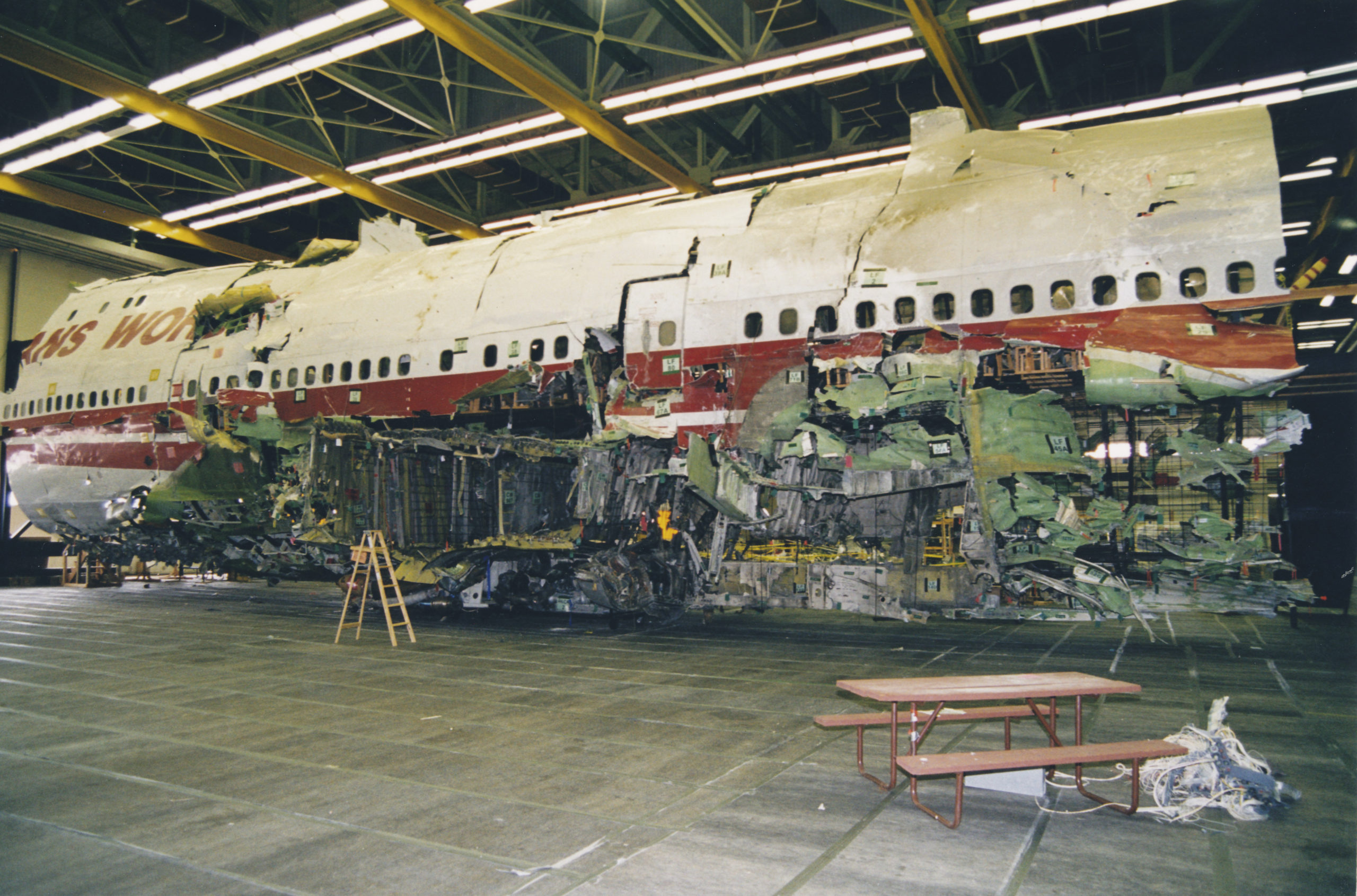
Twenty-five years ago Saturday night, Paris-bound TWA Flight 800 exploded in the air about 10 miles south of East Moriches, killing all 230 passengers and crew on board and casting a pall that lingered across Long Island for weeks afterward, as search and recovery teams labored to retrieve the remains of the victims and pieces of the wreckage from the ocean floor.
The July 17, 1996 tragedy was noteworthy on the East End in part because there were so many victims with local ties, including Beverly Hammer and her daughter, Tracy, of East Hampton; Angela Murta of Bridgehampton; Donna Griffiths of Westhampton; fashion photographer Rico Puhlmann of New York City and Water Mill; Robert and Elizabeth Miller of Tenafly, New Jersey, who had a summer home in Amagansett’s Bell Estate; Jed Johnson, a Manhattan interior designer with many local clients; and Dr. Eric Holst and his wife, Virginia. Dr. Holst had a dental practice in East Moriches and lived in Manorville.
As it has done every year but last year when COVID-19 intervened, the Families of TWA Flight 800 Association will gather Saturday evening at a memorial to the crash victims at Smith Point County Park — where there is an elaborate memorial for those lost — for a private event.
Although much early speculation centered on theories that either a missile or bomb had downed the plane, investigators who were able to reassemble more than 90 percent of the jet in a hangar at the Grumman complex in Calverton eventually concluded that it was something much more mundane that had caused the tragedy: a short circuit in wiring ignited jet fuel vapor in the central fuel tank that caused a massive explosion about 12 minutes after the plane had taken off from John F. Kennedy International Airport and had reached an altitude of about 14,000 feet.
A quarter-century after the third worst air disaster in American history, most of those who were involved in the rescue and salvage operations have retired or passed away.
Among them is James Kallstrom, the head of the New York City office of the Federal Bureau of Investigations, who died on July 3, at his home in Connecticut. Mr. Kallstrom became the face of the criminal investigation into the crash, giving more than 90 press briefings that summer. FBI investigators eventually concluded in November 1997 that there was no evidence to support their initial theory that the plane had been brought down by a bomb or missile.
Now, the reconstructed plane, which was eventually moved from Calverton to a federal facility at George Washington University in Ashburn, Virginia, is going to be destroyed later this year because federal officials believe it is no longer needed for training purposes.
Bob Martin, a retired New York Police Department deputy inspector, who headed the Special Investigations Division’s Joint Terrorist Task Force, and made many visits to the Calverton hangar where workers painstakingly reassembled the plane, said it is hard to fathom the amount of work that it took.
Naval salvage crews had to pull wreckage from a depth of about 125 feet and load it on barges that brought it to Coast Guard Station Shinnecock, where it was transferred to flatbed trucks and taken to Calverton past a handful of onlookers who gathered along the route.
“What a monumental effort that was,” he recalled. “You’d see a piece of debris that looked like the crushed fender of a Chevy, but the experts would look at it and say, ‘That’s part of a right wing aileron,’ and they’d know exactly where it belonged.”
Mr. Martin also praised the efforts of Mr. Kallstrom and Bob Francis of the National Transportation Safety Board, who headed that agency’s investigation, which took four years to complete and resulted in updated guidelines for commercial airliner construction practices.
“I don’t think you could have had two better guys,” Mr. Martin said.
Paul Geracke, who is retired from a career in the U.S. Coast Guard, was a lieutenant home on leave in Sag Harbor when he was ordered to report for duty at Coast Guard Station Moriches, where he worked in a trailer that had been converted into a public affairs office to deal with hordes of reporters who flocked to the scene.
He, too, remembered the enormity of the undertaking. “We covered a search area the size of Connecticut,” he said. While many different federal, state, and local agencies were involved, they were able to work smoothly together. “It was like the response to September 11,” he said. “We had a job to do and we did it.”
East Hampton Town Chief Harbormaster Ed Michels said that because Coast Guard Station Montauk had sent its boats west to the Moriches area to help with the recovery effort, the town’s Marine Patrol units covered for the local Coast Guard station.
Similarly, town officers worked with National Guard troops who were deployed to East Hampton to search the ocean beach for wreckage.
“There were pieces and parts that washed up all over the South Shore,” he said. “It was a nightmare, no doubt. It was one of those things we hoped we’d never have to deal with.”
The psychological impact on those working at the scene was very real, added Dianne Skilbred, a registered nurse, who volunteered with the Red Cross at various stations it had set up to serve those involved in the recovery effort.
“We treated a lot of young divers in their early 20s who were seeing things they weren’t prepared to see,” she said. “They were coming in with upset stomachs, nerves, nightmares.”
Ms. Skilbred, who is a North Haven Village trustee, was assigned to assist mourners at a memorial service that was held on Fire Island shortly after the crash, and remembered a Frenchman, who had lost a child on the flight, kissing her hand and thanking America for its response to the tragedy.
“It was so very awful, so sad, and so unexpected,” she said.